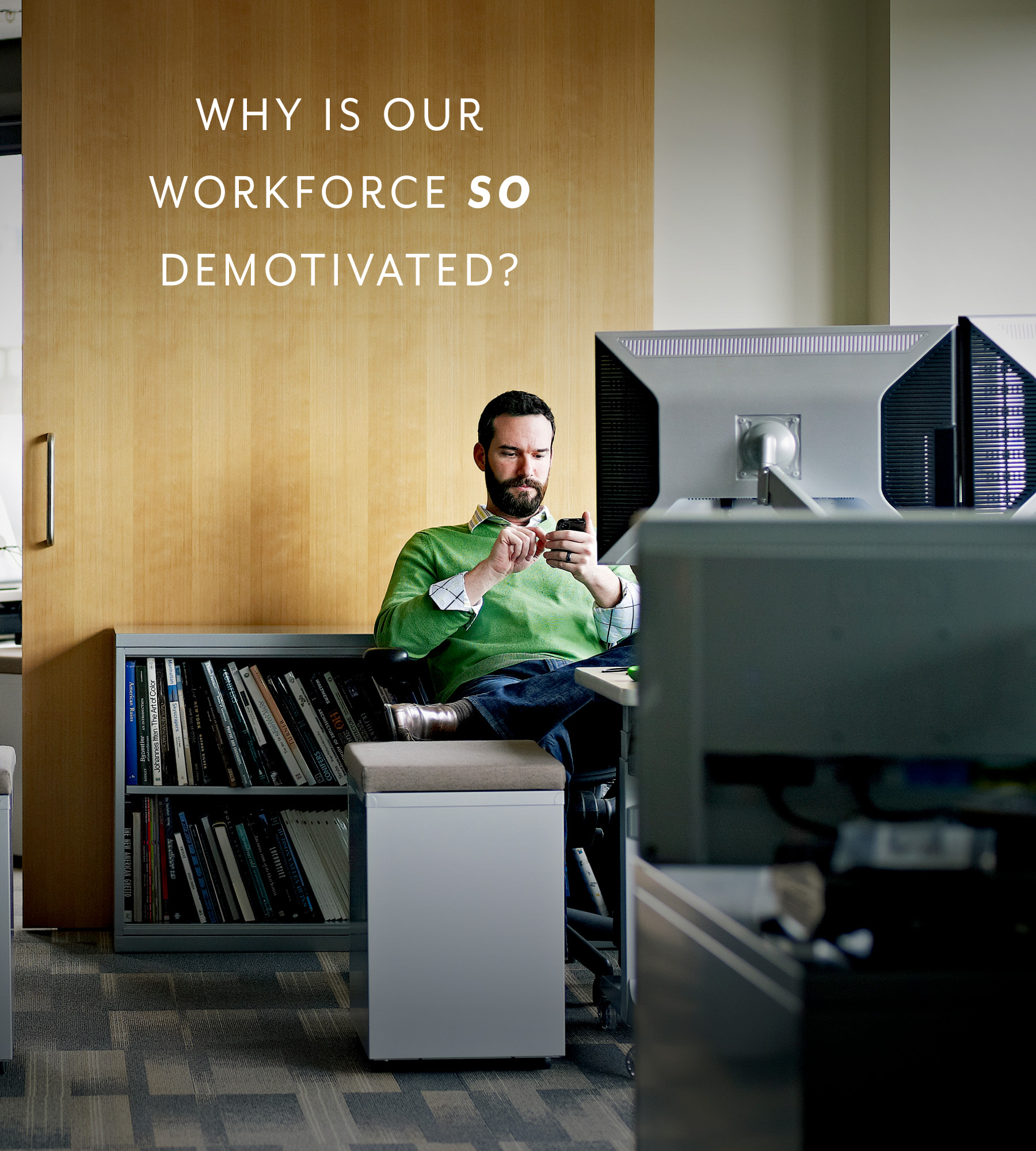Language
You can read the magazine in one of the following languages
Every executive knows the value of active employee contribution. Well-functioning employees drive purpose and contribute exponentially to the bottom line. Research shows engaged workers to be 45 percent more productive. Conversely, demotivated workers cost the equivalent of 18–34 percent of their annual salary. We need our human assets firing on all cylinders.
But they are not. Indicators show our workforce is far from engaged. Staff turnover for United Kingdom workers is 36 percent, and for the United States it’s 43.7 percent. As for quiet quitting, nearly six-in-10 global employees are psychologically disengaged from their organization despite working the agreed hours.

Motivation is one of the driving forces behind human behavior. It is the process that initiates, guides and maintains goal-oriented behaviors.
The truth is employee engagement levels have never been that impressive. In 2018, well before the COVID-19 pandemic, only 16 percent of employees worldwide were fully engaged. Australia fared a little better, with 24 percent engagement in 2017.
Today’s workforce, however, is not only disengaged but also demotivated. Motivation is one of the driving forces behind human behavior. It is the process that initiates, guides and maintains goal-oriented behaviors.
In 2017, 25 percent of the United States labor force were Baby Boomers, 33 percent gen X and 35 percent Millennials. At best, the oldest Millennial was only 36-years-old, so managed by a Baby Boomer, gen X or, if they were fortunate, by the Silent Generation.
In 2024, Boomers make up 17 percent of the workforce, gen X, 24 percent, Millennials 42 percent and gen Z 16 percent. By 2030, 33 percent of the United States workforce is projected to be gen Z, 41 percent Millennials and 25 percent gen X.

92 percent of Millennials feel their mental health has deteriorated since the COVID-19 pandemic and nearly a third have a behavioral health condition.
Back in 2017, the signs that team members were lackluster, apathetic, missing deadlines and the like may have been addressed with a direct conversation or by offering a day off if it’s ‘been a while’.
Basically, get your stuff together and come back to work performing. Support and understanding were there, but equally, the onus and responsibility sat with the employee. That’s not the case anymore.
We all felt hopeless at some point during the pandemic. Compassion and understanding with emotional and psychological support were a crucial part of a manager’s role. It was much-needed and highly appropriate for the time.
Post-pandemic, we went back to a ‘normal working life’. Accompanying us for the better were hybrid and flexible working. But the additional pandemic adornment that was to be left at home was our personal, psychological and emotional baggage.

Studies show those who express gratitude for their work are more likely to be motivated and engaged.
Businesses and their leaders were expected to wear every hat. The manager, inspirator, carer, parent, mentor, counselor and tissue giver, but never with tough love. Yet, the positive affirmations, encouragement and cocooning in a cotton wool-only approach haven’t protected and strengthened our workforce as we were led to believe.
By assuming a role that was not ours to play, we have unintentionally prevented our workforce from developing the necessary skills and resilience to navigate life’s various challenges: the good, bad, setbacks and silver linings.
They have morphed into far more. Offering a remedy of a motivational gee up or a day off won’t suffice. In fact, a mismanagement of the issue might cause you to deal with bigger HR issues.
Today, 92 percent of Millennials feel their mental health has deteriorated since the pandemic and nearly a third have a behavioral health condition. As for gen Z, a smaller share are thriving compared to Millennials when they were the same age.
Every business was hit with the skills crisis, the Great Resignation, workers’ movements and hiring dilemmas. So, it was understandable that we did all we could to attract and retain employees. Flexibility was a given, pandering was the new management tactic and every possible perk was on offer.

We need our human assets firing on all cylinders.
Now, we are paying the price. The loss of structure and discipline saw reduced stamina, coping mechanisms and resilience. Unfortunately, we have even lost our ability to compete. Of course, when you no longer have to ‘fight’ to stay in the game or stretch yourself, motivational levels fall.
The biggest cost of giving so much was the enablement of the ‘taker’. The lack of reciprocation with appreciation and gratitude cost us the most. Studies show those who express gratitude for their work are more likely to be motivated and engaged.
There is a fix. Many negative factors contributing to the deep-seated disenchantment and lack of motivation among today’s workforce can be mitigated. Taking on enhanced responsibility and accepting that we are entitled to receive only what we are ready to give is a start. This creates a benefit for all, including our precious workforce, business and society.

Roxanne Calder
Contributor Collective Member
Roxanne Calder, author of ‘Employable – 7 Attributes to Assuring Your Working Future’, is the Founder and Managing Director of EST10 – one of Sydney’s most successful recruitment agencies. For more information visit https://est10.com.au/
